After the Great Resignation and Quiet Quitting, organizations are now looking at the Great Restructuring and employee burnout by extension.
As of November 2022, over 201,948 employees have been let go globally across 800 different organizations.
But what about those employees who retained their jobs?
With massive restructuring underway, teams worldwide are now expected to deliver more with fewer resources.
While lean teams can help businesses survive financially during turbulent times, they also put enormous pressure on employees. In such scenarios, one of the common challenges for leaders is managing employee burnout.
In this blog, we’re sharing five critical touch points to help you spot and prevent burnout in your team.
- Manage change to manage employee burnout
- What is burnout at work?
- What causes burnout at work?
- 5 ways to detect symptoms of burnout in your team
Manage change to manage employee burnout
A change in the team structure or ways of working can enable some of your employees to thrive. For others, the same change may lead to burnout, especially when it is unexpected.
A global survey by Future Forum, with inputs from 11,000 employees across the world, shows that the burnout rate has gone up globally by 8% since May 2022.
To successfully manage and lead through unprecedented levels of change, leaders need to forgo the old productivity playbook and shift the focus to their teams instead.
By embracing intentional ways of connecting with your teams, you can keep employee burnout at bay.
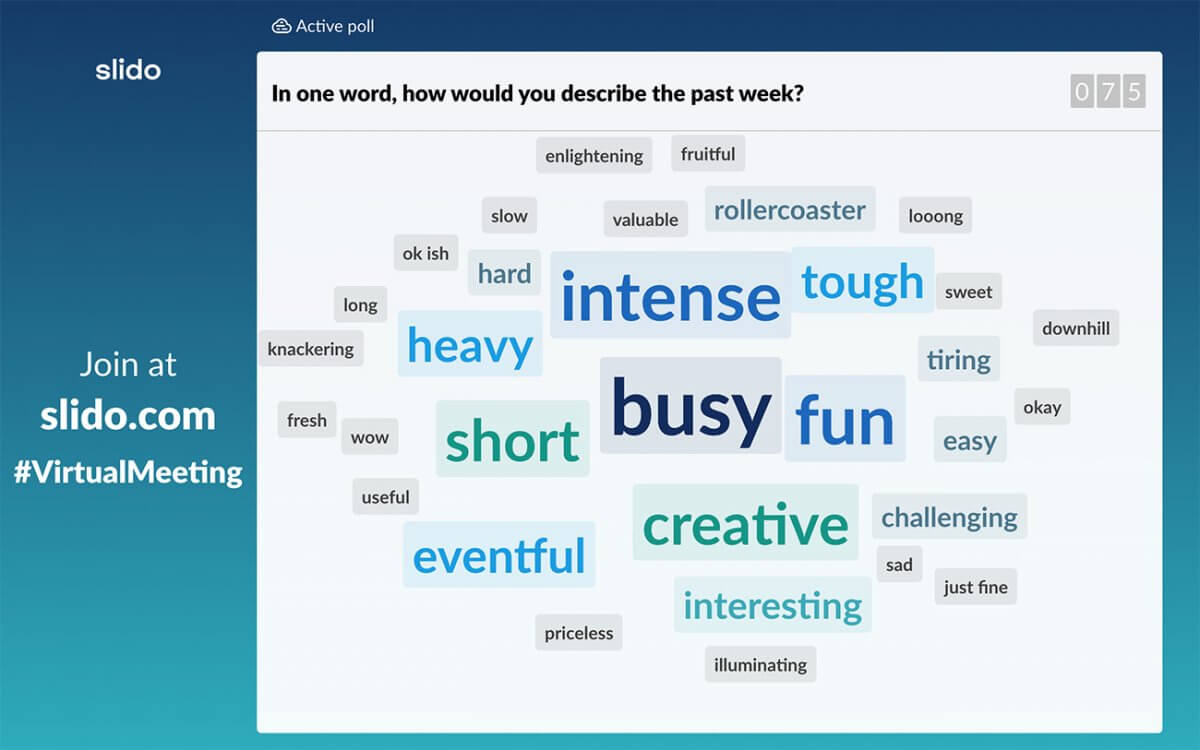
What is burnout at work?
Is burnout the same as depression? The symptoms of burnout at work often look and feel the same.
You may see that your team members are struggling with:
- Exhaustion or fatigue
- Negativity toward their work or co-workers
- A sudden drop in productivity
For most of us, the go-to solution at this point is to offer the team a vacation or extended time to take care of their personal needs.
This is where it becomes extremely important to distinguish burnout from other mental health concerns.
Unlike depression, which may be influenced by individual circumstances, burnout is specific to the workplace.
To put it more scientifically, the 11th Revision of the International Classification of Diseases (ICD-11) defines burnout as a “syndrome conceptualized as resulting from chronic workplace stress that has not been successfully managed”.
Burnout can go away if managed well.
As a team lead, the first step to preventing burnout in your team is to understand and acknowledge the contributing elements at your workplace.
What causes burnout at work?
Burnout is the result of a dysfunctional workplace. This manifests differently across teams depending on how they operate.
Some of the common causes behind employee burnout include:
-
Lack of clear goals and expectations
If your team isn’t clear on the results they are expected to deliver, they are more likely to be disengaged at work. Some of them may even take up busy work that may not deliver any direct results or measurable impact, leading to a lack of motivation and apathy in the long run.
-
Lack of ownership
Accountability is one of the key elements that help employees feel valued at work. If the projects are often getting disrupted by conflicting assignments or micromanagement, employees are left anxious, without having a say in how they work.
-
Lack of support
With the onset of hybrid work, relationship building continues to be one of the biggest challenges for managers as well as employees. Feeling isolated from the team can trigger burnout in employees as they try to tackle problems on their own.
To effectively take care of these critical concerns, managers need to embrace a more open and transparent approach when communicating with their team.
5 ways to detect symptoms of burnout in your team
The key to tackling burnout is to start small.
By making incremental changes in the right direction, you can guide your team to a more connected and productive path.
We’re sharing five quick “pulse check” ideas here to help you spot and prevent burnout in your team before it becomes a problem.
1. Check in with your team regularly
On a weekly basis, ask your team how they feel about their work pace at the moment. Be sure to make a note of this score and discuss it in detail with your teammates during 1:1 meetings. This will help you understand whether your team is at capacity or overworked.
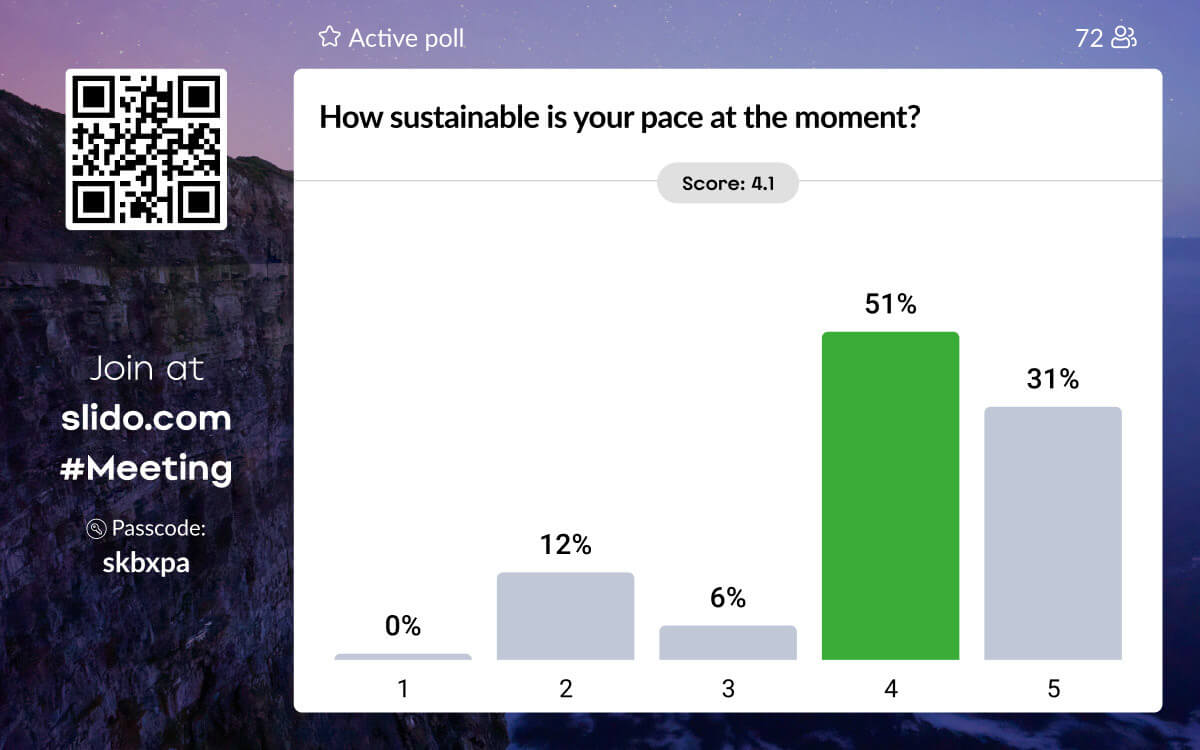
2. Measure your team’s understanding of the goals and expectations
Whether you’re conducting an All Hands meeting or weekly team sync, you can use this touchpoint to gauge your team’s knowledge of their roles and expectations. After presenting the goals or expectations, ask your team about how well they understood the content. Depending on the score, go over the key points once more or encourage people to enter their thoughts and concerns into a Q&A.
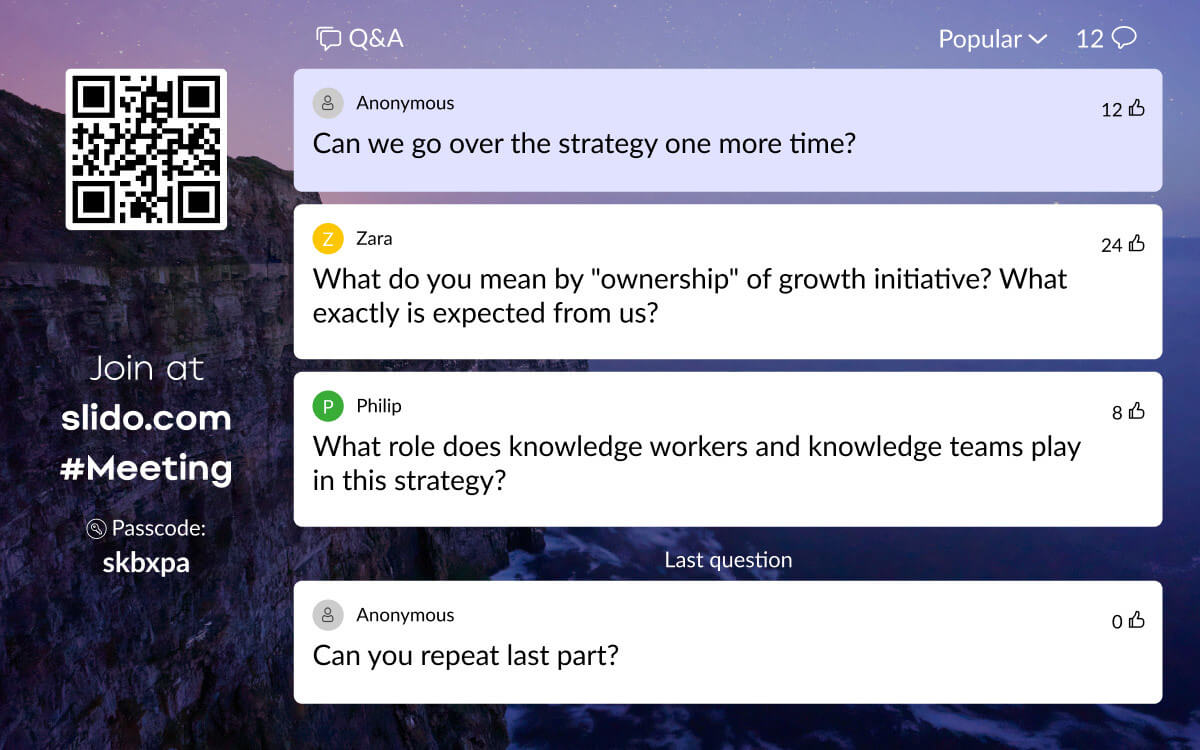
3. Visualize key challenges together
What if you could create a mood board of all the challenges facing your team? Ask your team to define their current blockers using one or two words and put it in a word cloud. By visualizing common challenges together, you’ll build a better sense of belonging in the team and spot any critical concerns before they become a problem.
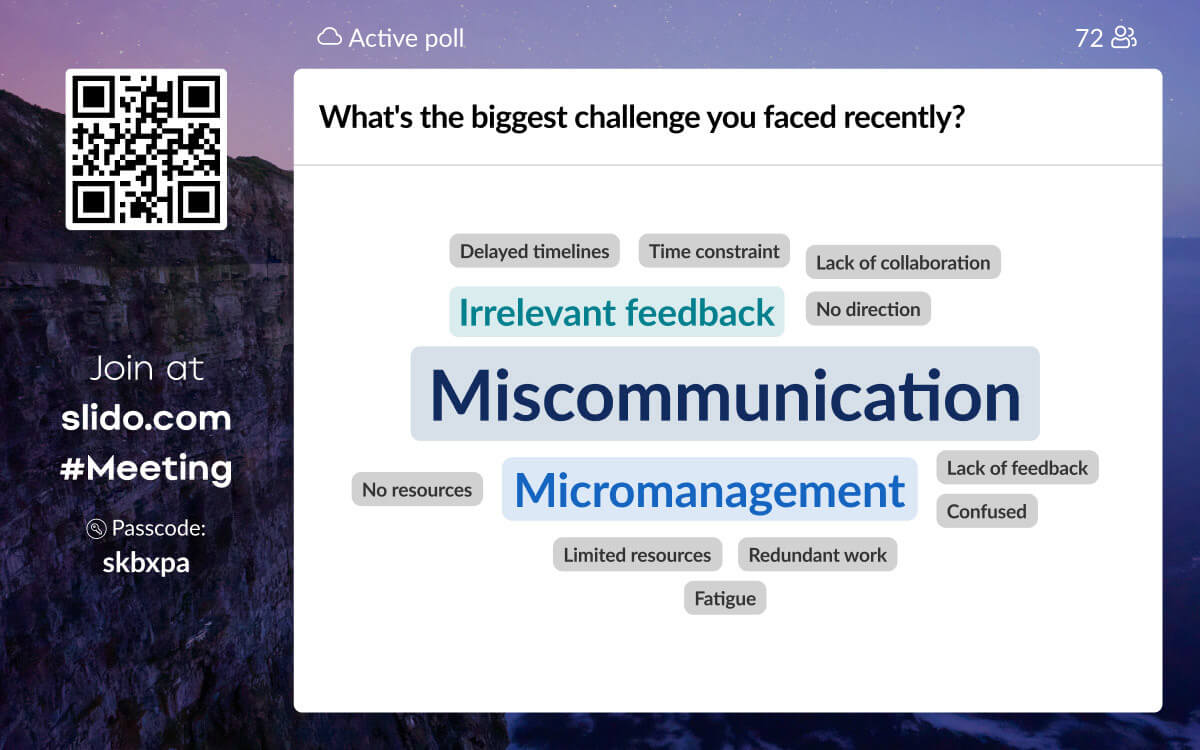
4. Establish a culture of belonging
Building relationships within a hybrid team is hard. However, lighthearted interactions such as “What made you happy last week” or “Who would you like to praise for last month and why” will set the right tone for positive conversations in meetings and foster bonding at the workplace.
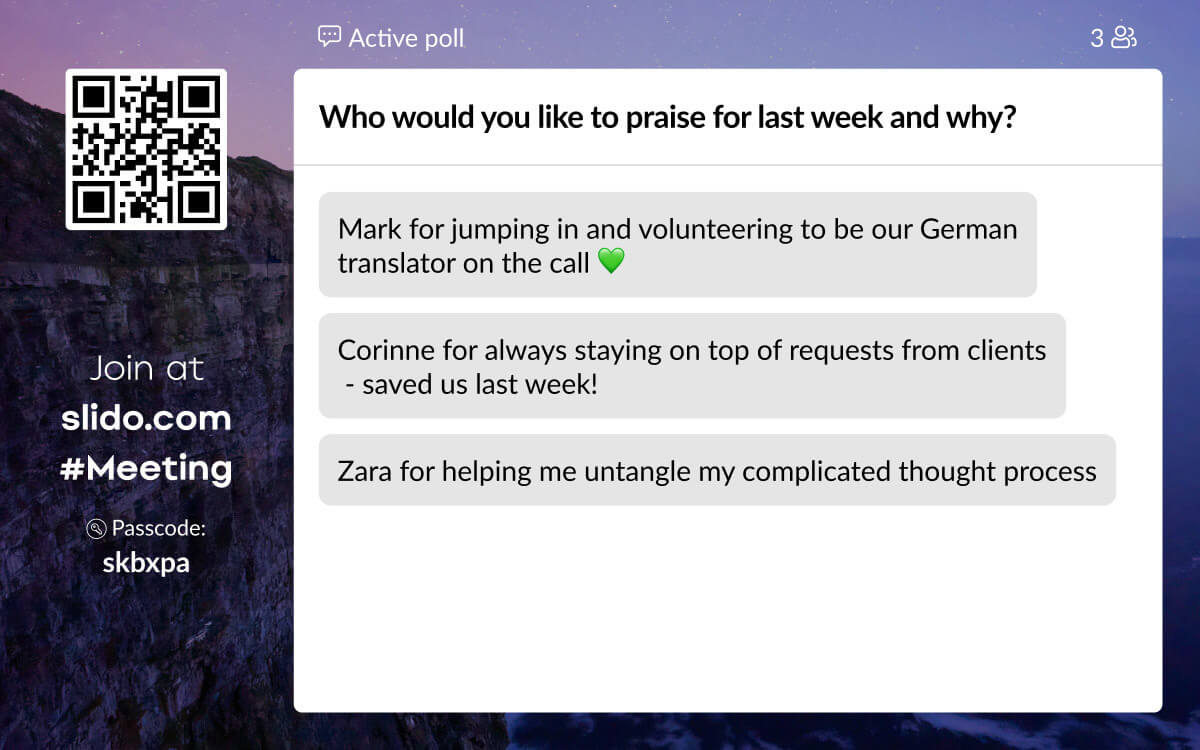
5. Deep dive into your workplace dynamics
To establish the foundation of a good work culture and build trust, leaders need to go beyond surface-level feedback. Enable anonymous feedback through pulse surveys and Q&As to help your employees speak up about issues that truly matter to them and expose any elements contributing to occupational burnout.
After all, these interactions are only the tip of the iceberg. Beyond each of these Slido poll questions and Q&As is an open dialogue waiting to happen.
You can use these touch points to enable transparency and establish trust, allowing your employees to remain agile amid changes.
Over to you
You may not have solutions for the many problems facing your employees. But, when it comes to burnout, you can get ahead of its challenges by collecting timely feedback. Start small and move mountains we say!



